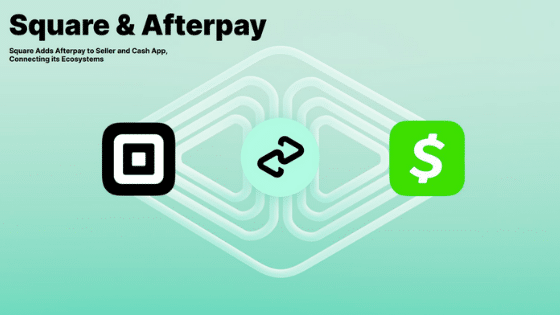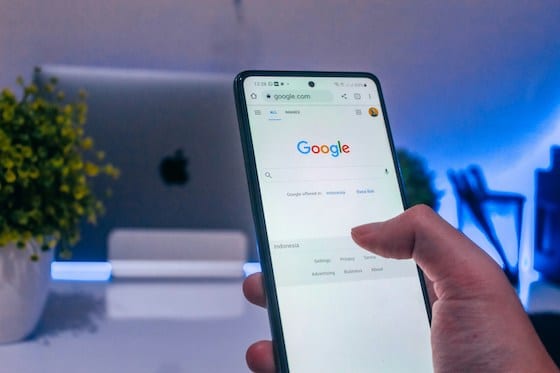Square has taken notice of the explosion in the buy now, pay later space. And it has placed $29 billion of its chips on one of its leading players, Afterpay, in a blockbuster deal announced over the weekend.
Square says it plans to integrate Afterpay into its Seller and Cash App business unit. The all-stock deal is expected to close in Q1 2022.
Afterpay has about 16 million active users on its app. And it has relationships with 100,000 merchants worldwide. In its FY2021, Afterpay had revenues of $693 million, with a 92% growth.
The deal initially triggered a negative reaction in the markets, which slapped Square on the wrist on concerns that it overpaid for Afterpay. At this writing, Afterpay has a market cap of $28 billion. However, both stocks were trading in positive territory after this morning’s Q2 earnings call. This suggests the call assuaged the initial concerns.
On that call, Square CEO Jack Dorsey and CFO Amrita Ahuja invited Afterpay co-founder and co-CEO Nick Molnar to help them explain the deal.
Flipping the Traditional Credit Model
Molnar founded Afterpay in 2011 with Anthony Eisen. Afterpay’s ambition from day one was to, in Molnar’s words, “flip the traditional credit model on its head.”
What Afterpay does is give consumers the opportunity to make a purchase and then pay it off in cash (via debit card) in four equal installments. Afterpay doesn’t conduct a credit check on consumers, but it does gate access to the platform to ensure responsible behavior. The platform starts consumers out with smaller purchase limits and allows them to grow via trust when they pay pack purchases in time. If a consumer misses a payment, they are cut off from making any purchases until they get back on track.
This model has been extremely popular overall. And in particular with millennial and GenZ consumers. These younger consumers, Molnar argues, have all but rejected the traditional credit model that he and his co-founder are so determined to upend.
“We saw a way to empower consumers to responsibly buy what they wanted, with their own money and to drive incremental value to merchants,” Molnar said.
Afterpay makes several claims about the value it delivers to merchants. These include larger basket sizes and higher purchase frequency. And Afterpay is a major lead source for its merchants, which include both enterprises and SMBs.
“On average, our top 10% of consumers globally used Afterpay more than 30 times in the U.S, and 60 times in Australia in the financial year 2021,” Molnar said on the earnings call.
In FY21, Afterpay says it drove more than 1 million leads on average per day. “It acts as a key marketing and customer acquisition channel for our global retailers in attracting is highly valuable next-generation consumers,” Molnar added.
Aligning Management Incentives
Buy now, pay later has seen explosive growth since its origins in the mid-2000s. And as with many things related to eCommerce, growth was accelerated by Covid.
The founders eventually moved the company HQ to the United States, which they believed was a better platform to scale the business globally. Afterpay launched in the U.S in 2018. And the U.S. has since become Afterpay’s biggest market. The company is currently listed on the Australia Stock Exchange (ASX). It was reportedly considering a U.S. listing before the Square deal came along.
Notably, the proposed acquisition is a 100% stock deal, often seen as a sign of weakness in an acquisition target. Ahuja addressed this issue on today’s earnings call.
She said the stock-heavy structure, “not only strongly aligns management’s incentives but also enables shareholders of both Square and Afterpay to participate in future upside opportunities.”
Competitive Headwinds
Afterpay, despite its strong recent performance, does face some competitive risk. It may have seen safety in the arms of Square, a fintech OG with a market cap topping $112 billion.
Afterpay has many direct competitors. One, Sweden’s Klarna, is a private company with a $45.6 billion valuation. This year alone, Klasrna has raised more than $1.6 billion. And then there is Affirm, a public company with a $17 billion market cap. Move down into the second tier and you come up with names like Splitit, Zebit, Sezzle, Quadpay, and others.
Then there are the regional players. Many of these are likely to be bought up by the Klarnas and Affirms of the world.
And perhaps Square down the road.
The Middle East, for one, is a highly competitive BNPL market. There are roughly half a dozen companies vying to outraise and out hustle their rivals. Afterpay in fact invested $10 million in one of these companies, Postpay, back in June.
And then there are the big payments platforms. PayPal is now active in the BNPL space. And in July we reported that Apple’s upcoming Apple Pay Later entry into the BNPL wars was a potential game-changer.
Two Big Questions
Two big questions hung over this deal.
Analysts on the call asked more than once why Square decided to buy a BNPL platform rather than build its own native solution. And of course, why Afterpay specifically.
Dorsey cited a number of reasons for this decision on the earnings call, when pressed on the build vs. buy question.
“I mean, we’re always considering the options we have before us, but in this particular case the road came back to Nick and the team,” Dorsey said, adding that Afterpay, as an early mover in BNPL, brings market understanding that Square couldn’t easily build.
“We get a lot of wisdom, a lot of knowledge, a lot of customer understanding [from Afterpay]. And that will set us up for a much stronger future where we can move much, much faster than if we were to start from scratch.”
Dorsey and Molnar also spoke repeatedly about a shared sense of mission for greater financial inclusion and a more level playing field for both merchants and consumers. Dorsey specifically noted that Afterpay’s more purist approach to BNPL, with no credit checks or hidden interest, attracted them to Afterpay compared to other BNPL platforms.
The different trading multiples between the two companies might also help explain the deal. BNPL platforms trade at higher multiples than other fintechs like Square. Square is currently valued at roughly 12X last year’s revenue. Meanwhile, Afterpay’s market cap is 42X FY21 revenue. Other BNPL platforms trade at similar multiples of revenue.
The second big question involved how Square planned to fit Afterpay into its ecosystem. And how Afterpay adds value to Square.
Basically Square looks at the deal as a boost to its seller side, where it empowers merchants to accept in-store and online payments. And on the consumer side, Square sees Afterplay plugging into its popular CashApp peer-to-peer payments platform. CashApp has about 70 million annual active users.
Access to Big Retail
Dorsey noted repeatedly that Afterpay, with its enterprise-heavy merchant base, will provide Square with a channel to larger retailers. This is one clear area where Afterpay is strong and Square is relatively weak.
“This is yet another tool to help drive more sales to a seller,” Dorsey said. “And also help us reach sellers that we had not been able to serve in the past, and that includes larger more enterprise, global retail sellers.”
So this is a pretty big deal. While Square probably could have built this itself, it wouldn’t have elevated Square into a leadership position in BNPL. At least not right away. Assuming this deal closes, Square will have a pretty close to complete payments ecosystem. And Afterpay will have the protection it needs in a competitive field that just keeps driving the need for greater scale.
And now that the rationale has sunk in, the markets seem to like this deal.




